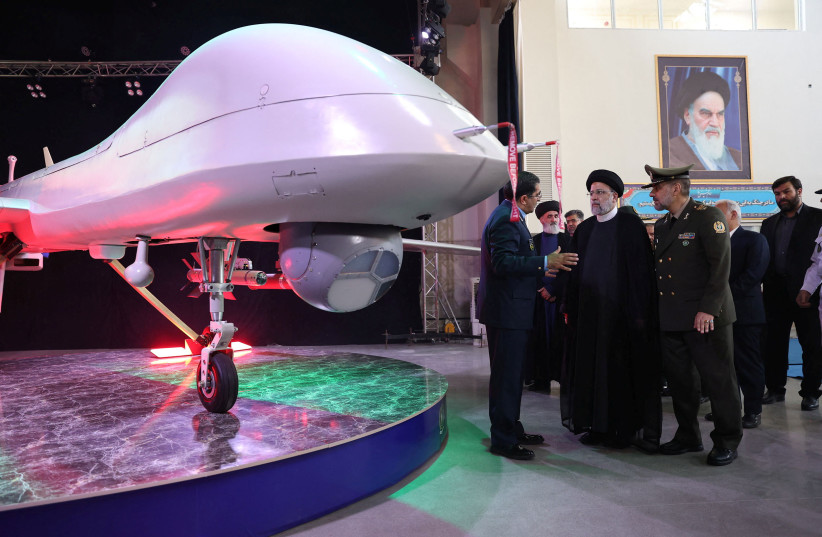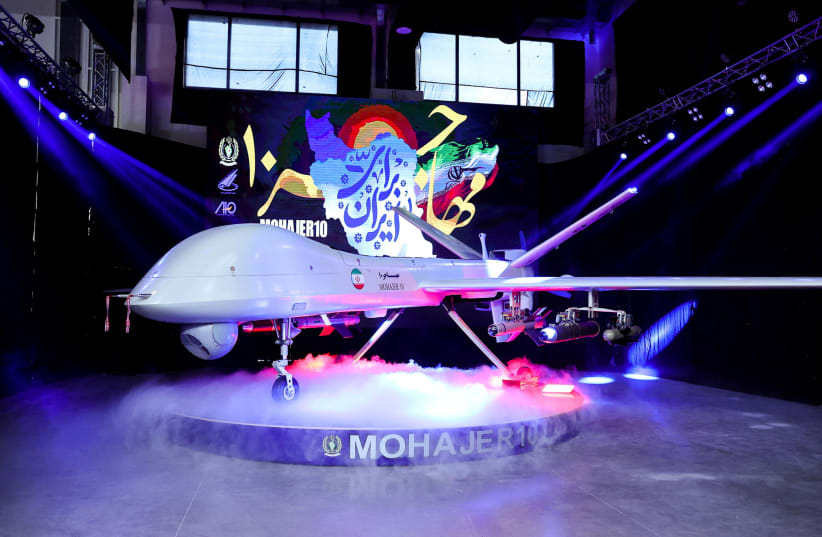Iran celebrated its national defense industry day with the unveiling of a new drone that it claims is the latest achievement of its defense industry.
The “Mohajer-10” is supposed to have a range of 2,000 km. and the ability to fly for up to 24 hours at an altitude of 7,000 meters.
This means that Iran could use this drone to threaten Israel or US forces in the region. Iran’s drones have been in the spotlight in recent years because Iran supplies Russia with its Shahed 136 model kamikaze drones. The new drone has similarities to the US-made Reaper drone as well as other similar drones in this class of long-range UAVs that carry heavy payloads, such as missiles.
Iran's rise in the defense industry market
Many countries today make similar drones, such as China and Israel. Israel and the US were the major pioneers of modern drones such as the Predator, Hermes, and Heron drones.
Iran has become a recent player in the drone market, increasing the range and quality of its drones. Iran’s drones have their origins in the 1980s, but only in recent years has Iran been able to arm their drones, and extend their range and abilities. The major issue facing drone manufacturers is making large UAVs that can both carry missiles and hi-tech surveillance systems, and also communicate with their base at long ranges. This aids in precision and impacts how drones can carry out attacks or monitor enemies.

Iran’s drones have often been unveiled in the past with claims of new capabilities, such as new optics, radar, communications, and missile systems, yet many of them don’t live up to their reputations. Iran has used drones in the past that look like the US Predator and Reaper, in Syria and Iraq, and has exported drone blueprints to Hezbollah, the Houthis in Yemen, and Hamas. Iran even used drones to threaten Israel from Syria, however, many of these drones fly at low speeds, like flying lawnmowers, and don’t have large weapon payloads on board.
The Russian decision to acquire Iranian Shahed kamikaze drones has changed the game because kamikaze drones can wreak havoc at long ranges and with some precision. However, these drones are better suited to terrorizing civilians than as a strategic weapon.
Iran’s new drone is supposed to be able to carry a payload of some 300 kg. and has a speed of 200 km. per hour. This is about half as fast as the US Reaper and it’s a payload that is about a quarter of the US equivalent. What that means is that Iran has unveiled a drone that is still a decade or two behind what its competitors have been able to create. Nevertheless, Iran says its drone has the ability to carry weapons, and that it has electronic warfare and intelligence systems on board.
Iranian president's presence signals drone's importance to Tehran
Iran unveiled the drone in a ceremony with Iranian President Ebrahim Raisi, illustrating how important this weapon is to Tehran. Iran has recently boasted of new hypersonic and ballistic missile abilities, and is also expecting to import and export more defense systems. The Iranian reports on the drone from Tasnim News say that this is the latest in the Mohajer family of drones that date back decades. According to the reports, Iran has improved its drones greatly in recent years with newer models, which is its main bragging point. It has been building these kinds of drones for many years, often trying to copy other drones, such as US models. However, Iran has rarely been able to build drones with the same type of endurance or abilities as its competitors, and is not always capable of mass production. These days, with Russian backing, Iran is able to establish factories abroad for serial production of these systems, which improves its capabilities.
Iran expects to use these new drones to showcase the country’s pride in its defense establishment. It may try to sell some of them abroad or use them as a flagship of the drone industry. Iran’s Shahed family of drones already included the Shahed 129, which is similar to the newly unveiled Mohajer-10. Other Mohajer drones have been exported by Iran to places like Venezuela, but not this model. Iran also unveiled the ‘Gaza’ drone, which is similar to the Mohajer-10 and Shahed 129 design.
Iran’s own media appears to admit that the Mohajer-10 is not a real game changer, it merely adds capabilities to what already existed. Whether Iran can use these drones effectively abroad is unclear. These types of large drones are easy prey to air defenses due to their slow speed, and are easy to see due to their relatively large radar signature. This means that the next generation of drones many countries are investing in are either swarming drones or loitering munitions, meaning precision kamikaze systems.
The Predator-style drone was well suited to the global war on terror against insurgents and in air space that is not contested, but Iran’s drones will face modern radars and air defenses. The Russian-acquired drones from Iran that are used in Ukraine, for instance, are shot down at a rate of between 60-90 percent according to many reports. This means they are largely ineffective.
